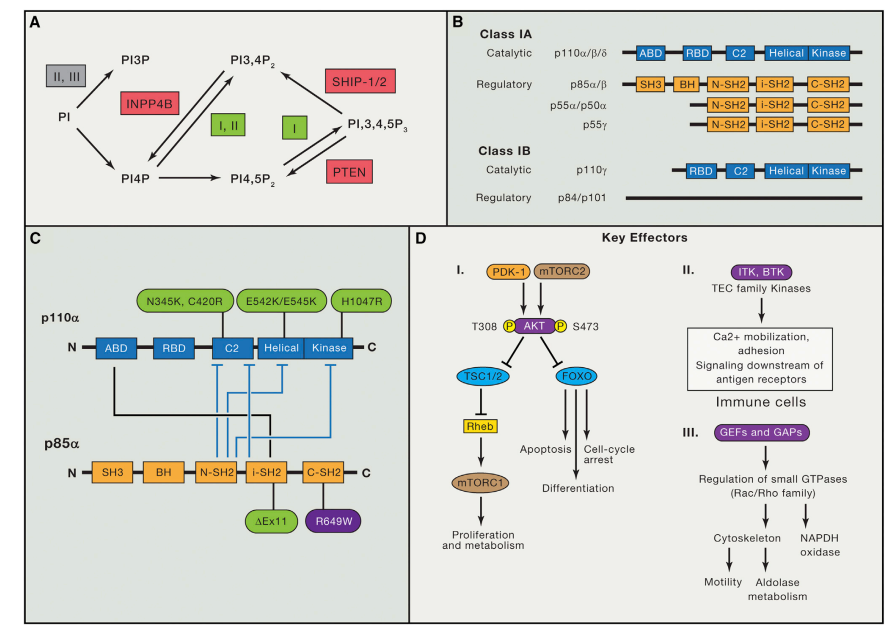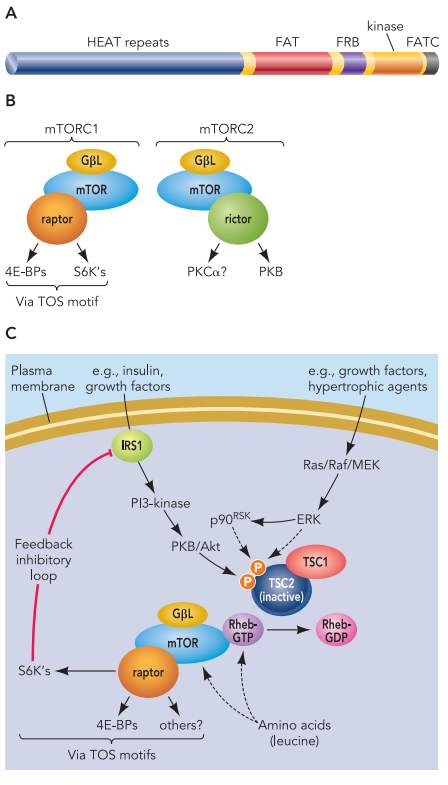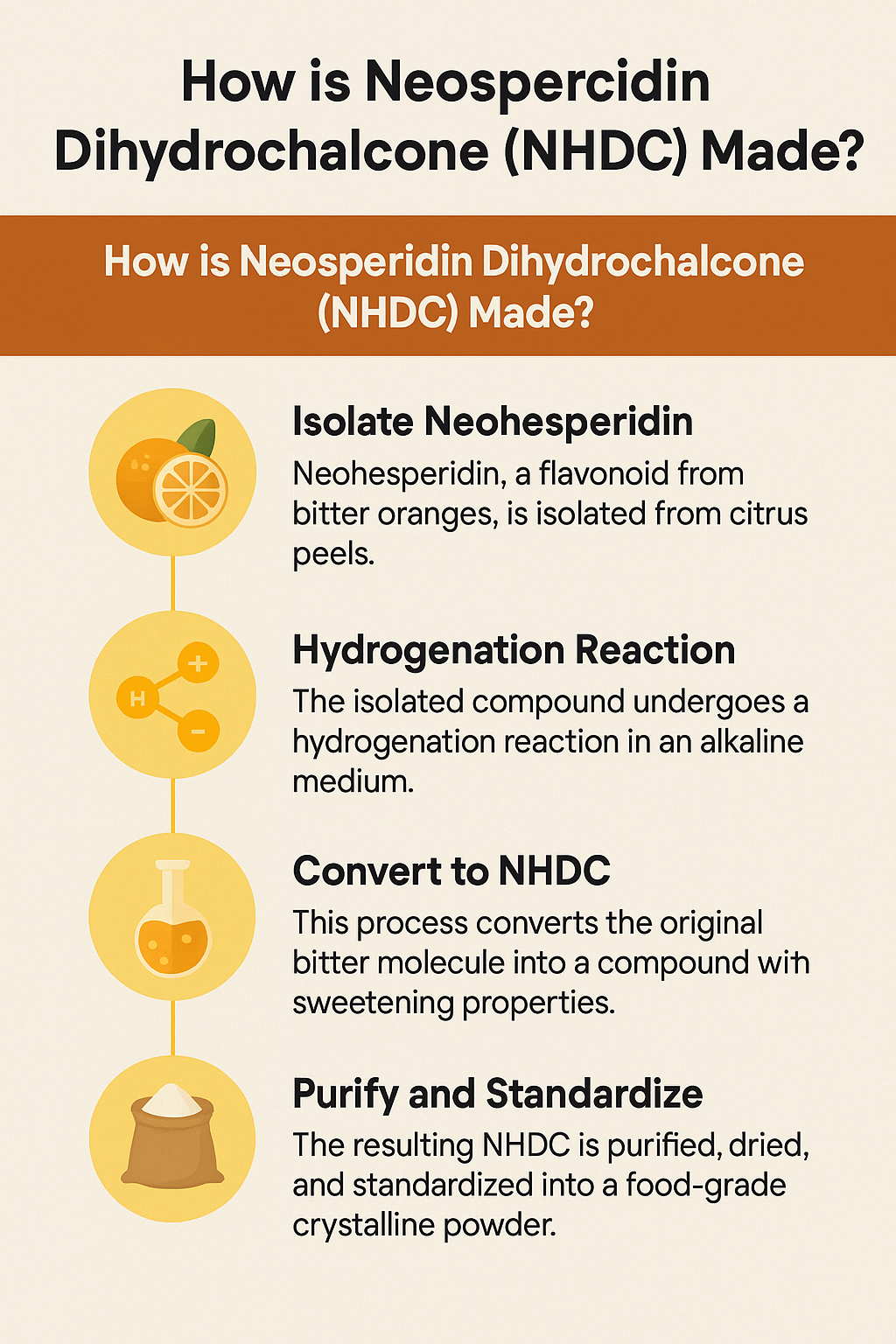What is Equol? Benefits, Metabolism, and Health Implications
Abstract
Equol, derived from daidzein in soy-based foods, is a focus of intense research due to its potential health benefits. Its unique interaction with estrogen receptors is valuable for hormone-related conditions like breast and prostate cancers. Produced in the gut by specific bacteria, equol’s synthesis varies individually, prompting personalized nutrition studies. Notably, it lowers LDL cholesterol, aids postmenopausal bone health, and exhibits neuroprotective antioxidant properties. Ongoing research explores its use in tailored functional foods and pharmaceuticals, promising individualized solutions for diverse health needs.
Introduction to Equol
Equol is a naturally occurring compound classified as a chiral molecule, meaning it exists in two mirror-image forms: (S)-equol and (R)-equol. (S)-Equol is a metabolite derived from daidzein, a phytoestrogen found in soy-based foods. Its chemical structure consists of a central carbon atom bonded to hydrogen and hydroxyl groups and a complex arrangement of atoms that gives it its unique properties. Due to its structural configuration, (S)-equol can interact with estrogen receptors in the body, leading to its exploration in research for potential health benefits, especially in the context of hormone-related conditions and human nutrition.
Biosynthesis and Metabolism
Biosynthesis of (S)-equol involves a dual process: bacterial production in the gut and subsequent human metabolic pathways. In the gut, specific bacteria, like Lactococcus, Bifidobacterium, and Lactobacillus, transform daidzein from soy-based foods into (S)-equol through enzymatic actions. Only individuals harboring these equol-producing bacteria can naturally synthesize (S)-equol in their guts.
Upon consumption, daidzein is absorbed in the intestines and then metabolized in the liver and other tissues. In equol producers, daidzein undergoes various enzymatic conversions, including hydroxylation and reduction, leading to the formation of (S)-equol. This metabolic transformation is vital as (S)-equol possesses unique biological activities, particularly in interacting with estrogen receptors in the human body.
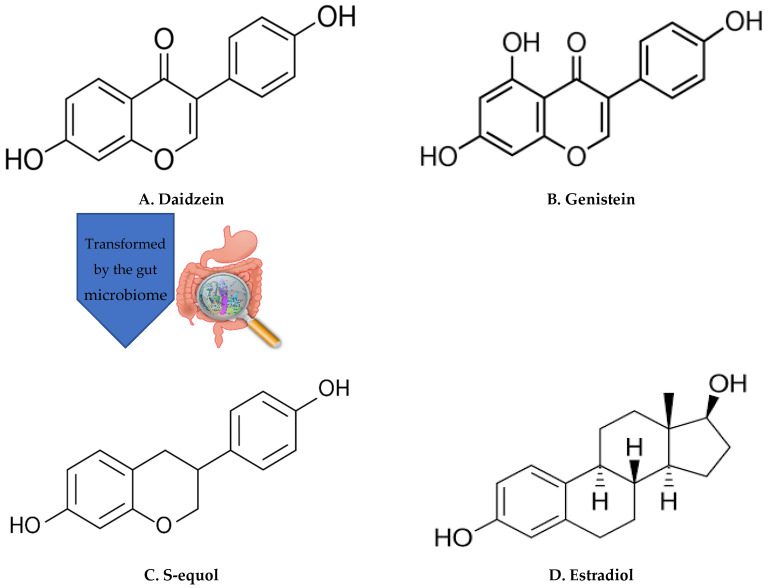
Fig. 1 Chemical structures of daidzein, genistein, equol, and estradiol
Dietary Sources and Natural Occurrence
Dietary sources of (S)-equol primarily stem from soy-based foods and legumes, where it is a metabolite of daidzein, a phytoestrogen present in these plants. Soy products like tofu, tempeh, and soybeans, as well as chickpeas and lentils, are rich natural sources. However, the production of (S)-equol is dependent on the presence of specific equol-producing bacteria in the human gut, leading to individual variability in its occurrence. Despite this, these plant-based sources serve as the foundation for (S)-equol intake, with ongoing research exploring methods to enhance equol production in individuals lacking these bacteria, thereby expanding dietary avenues for its consumption.
Biological Activity and Receptor Interactions
(S)-Equol, a metabolite derived from daidzein found in soy-based foods, exerts its biological activity primarily through interactions with estrogen receptors. It displays selective estrogen receptor modulator (SERM) properties, meaning it can act as both an agonist and antagonist, depending on the tissue and the presence of other estrogen hormones. Specifically, (S)-equol can bind to estrogen receptors (ER) alpha and beta, influencing gene expression and cellular responses.
In tissues where estrogen receptors are present, such as breast and prostate tissues, (S)-equol may act as an estrogen agonist, mimicking the effects of natural estrogen. This property can be beneficial, especially in postmenopausal women, as it might alleviate certain symptoms associated with estrogen deficiency, like hot flashes and bone density loss. Additionally, its estrogenic effects could have implications for hormone-related cancers. By binding to estrogen receptors, (S)-equol might interfere with the growth signals in hormone-sensitive cancer cells, potentially inhibiting their proliferation.
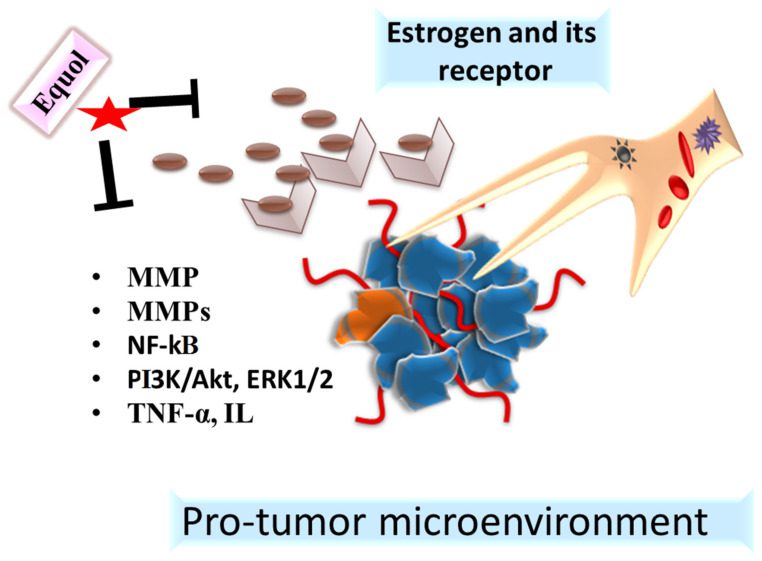
Fig. 2 Anticancer action of equol through modulating its binding to estrogen receptors
Moreover, its antagonistic action can be protective. In tissues like the uterus and certain parts of the breast, (S)-equol can block the effects of more potent endogenous estrogens, reducing the risk of abnormal cell growth and hormone-related cancers. The intricate balance between these agonistic and antagonistic effects showcases the complexity of (S)-equol’s interactions within the body, making it a subject of intense research, especially in the fields of cancer biology, women’s health, and personalized medicine.
Health Benefits and Disease Prevention
(S)-Equol has garnered attention for its potential health benefits and disease prevention properties. Research suggests that (S)-equol possesses significant anti-cancer effects, particularly in hormone-related cancers such as breast and prostate cancer. By interacting with estrogen receptors, it can modulate cell growth, potentially inhibiting the development and progression of hormone-sensitive tumors.
Moreover, (S)-equol has been linked to cardiovascular health. It exhibits cholesterol-lowering properties, promoting cardiovascular well-being by reducing levels of LDL cholesterol, often referred to as “bad” cholesterol. This effect can lower the risk of atherosclerosis and heart disease. Additionally, (S)-equol’s interaction with blood vessels might contribute to better blood flow, further supporting heart health.
In the realm of bone health, (S)-equol’s potential as a natural estrogen-like compound is valuable, especially in postmenopausal women. Estrogen plays a crucial role in maintaining bone density, and (S)-equol, as an estrogen modulator, might help prevent osteoporosis and reduce the risk of fractures.
Furthermore, (S)-equol’s antioxidative properties are of interest in neuroprotection. Its ability to neutralize harmful free radicals might play a role in preventing neurodegenerative diseases like Alzheimer’s and Parkinson’s.
Individual Variability and Factors Influencing Production
Individual variability in (S)-equol production arises from a complex interplay of factors. Genetic makeup significantly influences the presence of equol-producing bacteria in the gut, impacting an individual’s ability to convert daidzein from soy-based foods into (S)-equol. Gut microbiota composition varies widely among people, further contributing to this variability. Additionally, age, diet, and lifestyle choices influence equol production. Younger individuals tend to have a higher prevalence of equol-producing bacteria. Moreover, consistent consumption of soy-rich diets fosters the growth of equol-producing bacteria, potentially increasing (S)-equol production. Conversely, antibiotic usage, stress, and certain medical conditions can disrupt gut microbiota, affecting (S)-equol synthesis. Understanding these factors is crucial in personalized nutrition, aiding the development of strategies to enhance (S)-equol production and optimize its health benefits for diverse populations.
Clinical Studies and Medical Applications
Clinical studies exploring the potential of (S)-equol have provided valuable insights into its medical applications. Research has focused on its role in cancer prevention, especially in hormone-related cancers like breast and prostate cancer. Studies have investigated (S)-equol’s ability to modulate estrogen receptors, potentially inhibiting tumor growth, making it a subject of interest in cancer therapeutics.
Furthermore, (S)-equol’s cardiovascular benefits have been examined, with research indicating its potential to lower LDL cholesterol levels and improve blood vessel function. These findings suggest its relevance in cardiovascular disease management and prevention.
In women’s health, (S)-equol’s estrogen-like effects have been explored in managing menopausal symptoms such as hot flashes and bone loss, providing a natural alternative to hormone replacement therapy.
Moreover, (S)-equol’s antioxidant properties have prompted studies in neuroprotection, suggesting potential applications in neurodegenerative disorders.
While these studies are promising, ongoing clinical research is vital to validate these findings and ascertain appropriate dosages and delivery methods. (S)-equol’s unique biological activities offer a promising avenue for personalized medicine, with potential applications in cancer therapy, cardiovascular disease prevention, hormone-related disorders, and neuroprotection, providing hope for improved treatments and enhanced quality of life for patients.
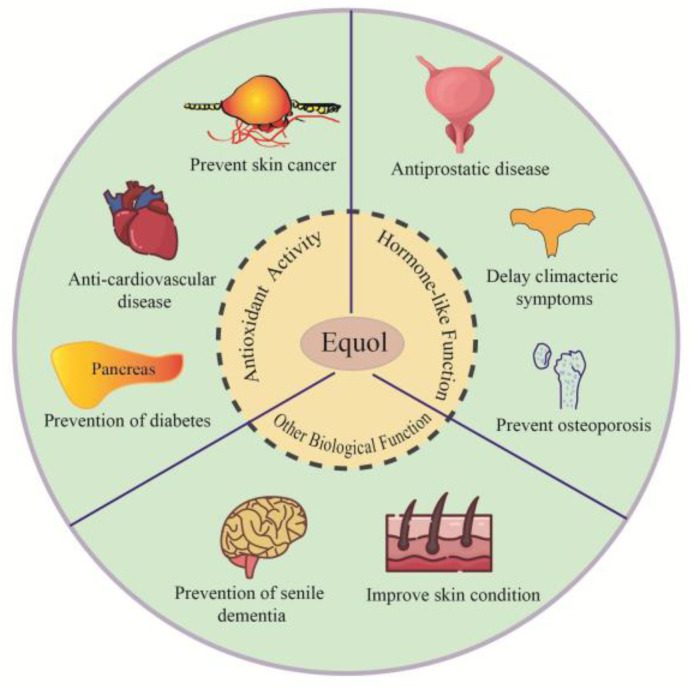
Fig. 3 The main biological functions and applications of equol
Role in Gut Health and Microbiota Modulation
(S)-Equol plays a significant role in gut health and microbiota modulation. It acts as a prebiotic, fostering the growth of beneficial gut bacteria, which are essential for digestion, nutrient absorption, and overall immune function. Equol-producing bacteria contribute to a balanced gut microbiota, promoting intestinal health. Additionally, equol’s presence can influence the composition and diversity of the gut microbiota, which in turn affects various physiological processes, including metabolism and inflammation regulation. Understanding its impact on gut health has far-reaching implications, not only for digestive well-being but also for overall immune system function and potential prevention of gut-related disorders.
Nutritional Supplements and Functional Foods
(S)-Equol has become a focal point in the development of nutritional supplements and functional foods. Recognized for its potential health benefits, it is often included in dietary supplements aimed at individuals lacking equol-producing gut bacteria. Additionally, (S)-equol is integrated into functional foods, especially soy-based products, to enhance their nutritional value. These innovations provide consumers with targeted solutions to optimize their health. By offering equol supplementation through various forms, including pills and fortified foods, individuals can potentially access its health benefits, such as hormone regulation and cancer prevention, irrespective of their natural equol production, contributing to a more personalized and effective approach to nutrition and well-being.
Endocrine Disruptor Properties and Safety Concerns
While (S)-equol offers potential health benefits, its endocrine disruptor properties raise safety concerns. Due to its estrogenic effects, excessive exposure might interfere with hormonal balance, leading to adverse health effects, particularly in vulnerable populations like pregnant women and infants. Prolonged, unregulated use could potentially disrupt the endocrine system, impacting reproductive health and hormone-sensitive tissues. Therefore, comprehensive safety assessments are crucial in evaluating equol-based supplements and fortified foods. Rigorous monitoring ensures that while harnessing its potential, products containing (S)-equol are safe for consumption, minimizing risks associated with endocrine disruption and safeguarding public health.
Future Research and Implications
Future research on (S)-equol holds promising implications across several domains. Continued investigations into equol-producing gut bacteria and individual variability will pave the way for personalized nutrition, optimizing (S)-equol’s benefits based on an individual’s microbiota profile. Understanding its mechanisms of action on estrogen receptors will aid targeted therapies for hormone-related cancers and menopausal symptoms. Furthermore, exploring equol’s potential as a neuroprotective agent can open new avenues in treating neurodegenerative disorders.
In terms of applications, the development of equol-based pharmaceuticals and nutraceuticals is on the horizon. Tailored medications targeting specific diseases, such as hormone-related cancers or cardiovascular disorders, might revolutionize treatment strategies. Moreover, equol-enriched functional foods can offer a convenient, natural approach to health maintenance, benefiting a broader population.
Ethical and social implications arise concerning equitable access to equol-enhanced products. Addressing these concerns will be crucial for ensuring fair distribution of its benefits. Additionally, ongoing research must delve into long-term safety aspects, especially considering potential endocrine disruption, guaranteeing that while harnessing its potential, (S)-equol remains safe for diverse populations.
In summary, future research on (S)-equol not only deepens our understanding of its biological mechanisms but also holds the potential to revolutionize personalized medicine, offering tailored treatments and innovative nutritional solutions for improved public health and well-being.

